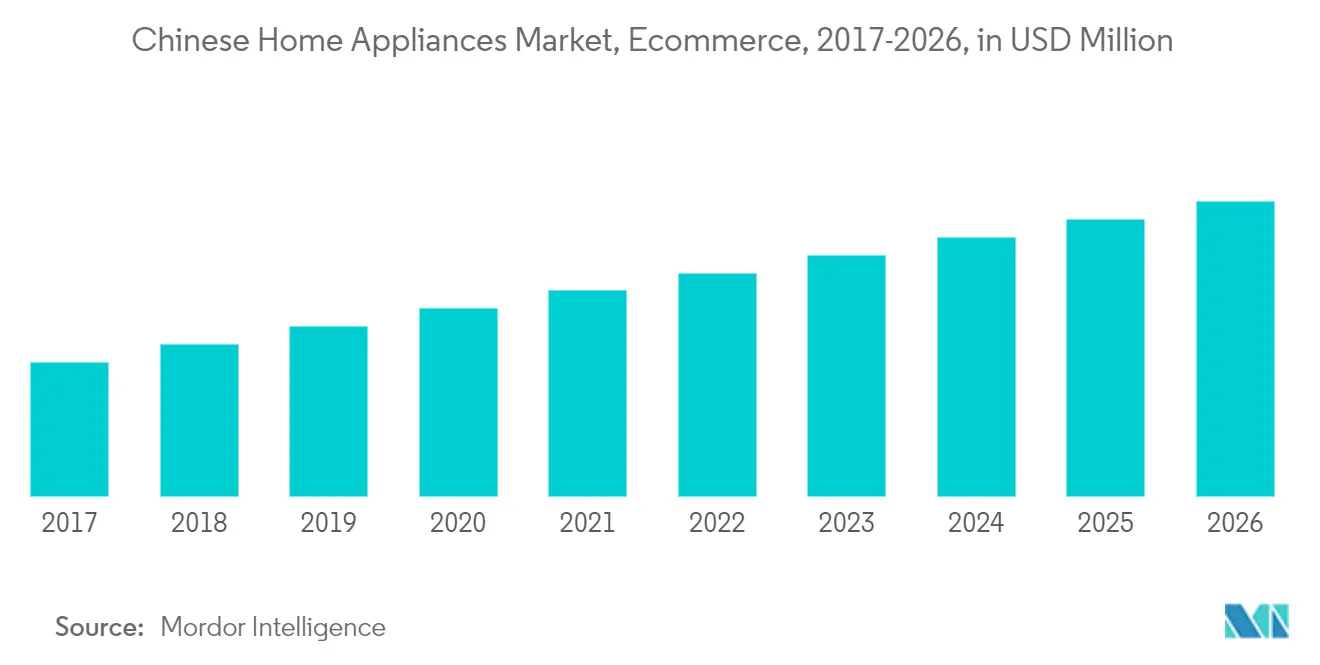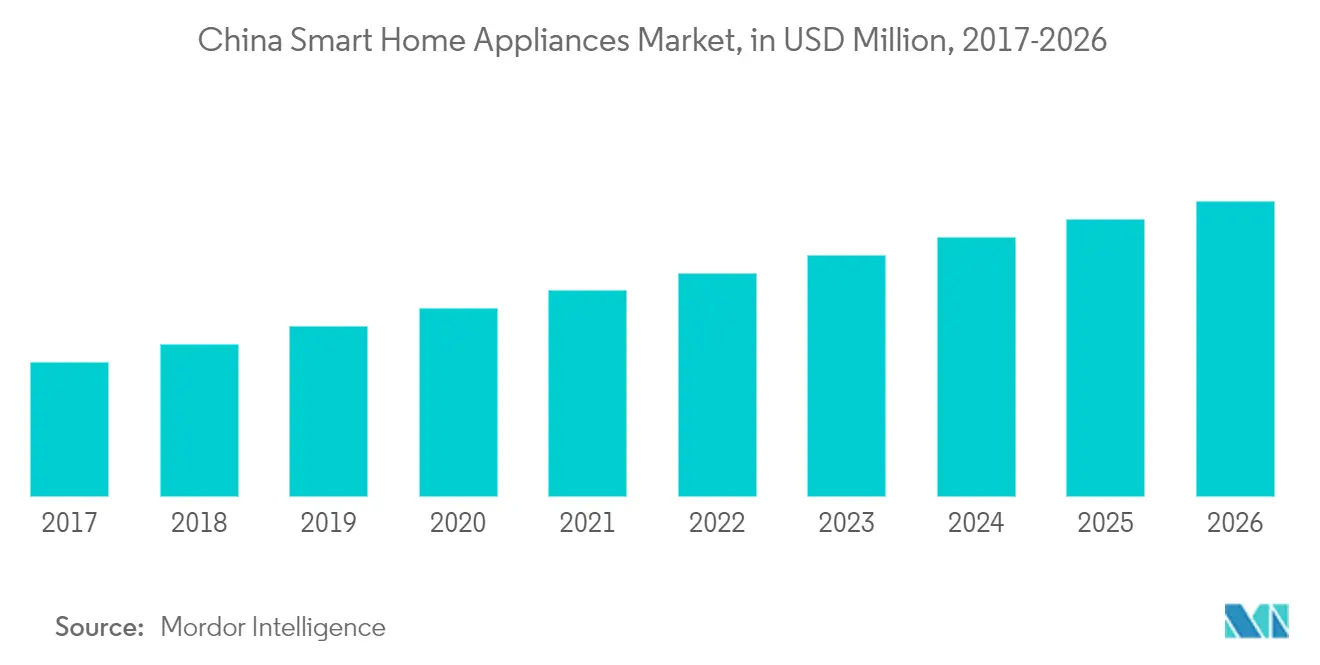Market Trends of China Home Appliances Industry
This section covers the major market trends shaping the China Home Appliances Market according to our research experts:
Sales Through E-commerce Increased Manifold in the Chinese Home Appliances Market
E-commerce's contribution to China's domestic consumption of home appliances has grown to record levels. The increase in e-commerce channels in China is being supported by their convenience, in terms of product comparison and at-home delivery, diverse product offers, competitive pricing, and the capacity to reach consumers who do not have easy access to other channels.
Chinese consumers increased their spending on home appliances in 2019 with more than 40% of orders placed online. E-commerce is making the greatest contribution to sales than ever, as its share increased to about 7.5% as compared to the same period in 2018.
The sales of traditional home appliances, such as TVs and washing machines, declined but on the other hand, new technologically advanced products, such as robot vacuum cleaners, dishwashers, and electronic face cleansers, enjoyed strong demand from the consumers. Small home appliances also saw explosive growth, while electric toothbrushes saw a huge increase in sales.
Online sales volume and value of air conditioners posted year-on-year growth rates of 105.1% and 124%, respectively, of hoods 99% and 92%, and of gas range 94% and 70%, respectively. Sales value of air purifiers and water purifiers grew by 91% and 50% year-on-year, respectively.
Chinese e-commerce giant JD.com, which started as a seller of electronic goods, dominated the market in the first half of 2019 while Sunning and Alibaba platforms followed the trend. Companies are speeding up the establishment of offline experience stores and flagship stores, to reinforce consumers' online and offline experience and interaction and make shopping quicker and more convenient.

Increasing Purchase of Smart Home Appliances is Expected to Drive the Market Growth
Technological advancements have led to the development of smart appliances and are expected to drive the growth of the household appliances market in China. Smartness has become a selling point for most home appliances. With Wi-Fi-capable products becoming commonplace, smart appliances are evolving from individual products to established situations with interconnected products. Appliances, such as washing machines, dishwashers, and refrigerators, are experiencing rapid growth.
At a stage of early exploration, both the business model and hardware of smart appliances need more breakthroughs. There are several issues to be addressed, including non-unified standards, unsatisfying user experience, hardly friendly operations, etc.
In March 2017, the China Household Electrical Appliances Association released its standard Cloud to Cloud Interconnection for Smart Household Appliances. Being the first in the industry, this standard paved the way for the further development of smart appliances.
In July 2018, Xiaomi launched a new product to its Mijia product line. Mijia Smart Air Conditioner, which won the 2017 Good Design gold award, features an anti-UV ABS polymer resin body. The product further includes additional features, such as an LED display on the front of the unit where users can control the temperature and cooling times via the Mi Home app from their smart devices.
Manufacturing wise, enterprises are stepping up their efforts in smart plant establishments and process improvements. Standard bearers grow particularly fast in this field.

